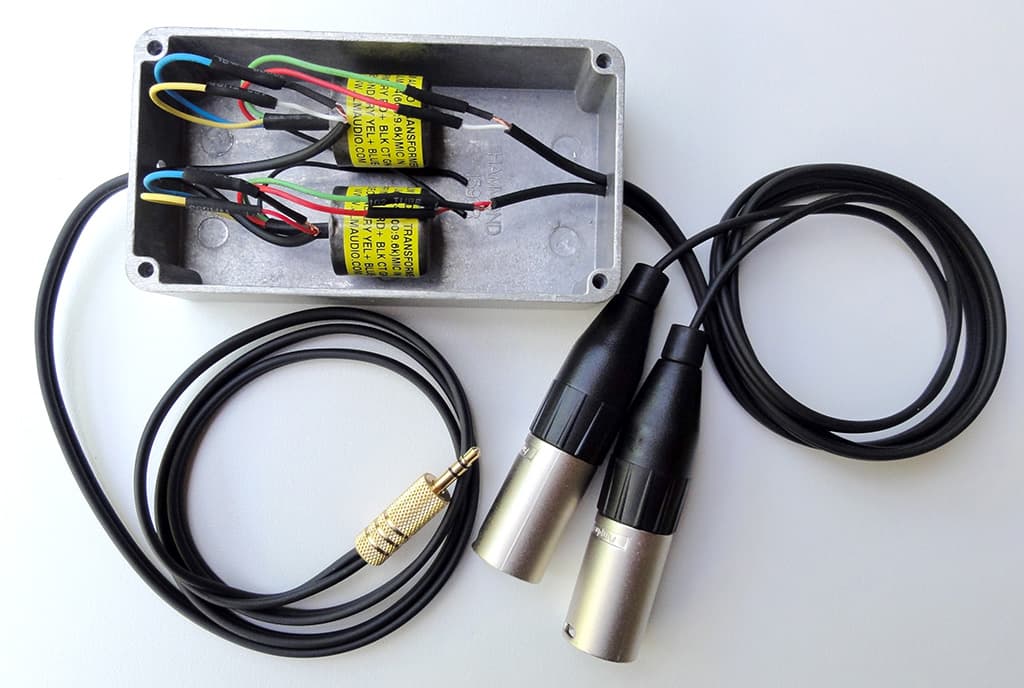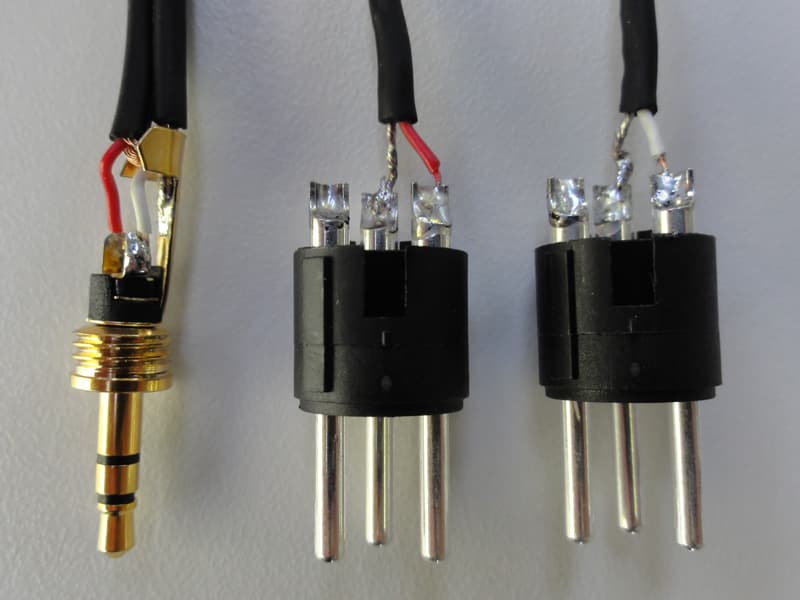
On The Bench: Dealing With The iThing
We all have some sort of iThing in our studios, venues and touring rigs these days. So how do we hook them up to equipment that predates them?
Text: Rob Squire
In the last issue of AT, Chris Vallejo presented an article that outlined his incorporation of an iPod dock permanently wired into his studio setup. Like all good ideas that sometimes fly under the radar, the relevance of including interfacing for iThings, laptops and the like into a modern studio setup was so obvious that I’d never really given it any thought. Others had, apparently…
Chris’s article got me thinking. My thinking turned into action early in the New Year when I found myself the owner of my first iThing – an iPad – and pretty soon the desire to hook it into the Neve 5315 console I was refurbishing arose. Such devices as the iPod, iPhone, iPad and laptops have become quite established as the alternative playback source in studios large and small, displacing most cassette decks and even CD players, so it’s high time we addressed how to go about hooking them into your studio setup correctly.
EXTERNAL IN
Traditionally, consoles provided ‘tape’ or ‘external’ returns that provided an alternative source from the mix bus to the monitoring section. In a well calibrated and wired studio, flicking between monitoring the stereo mix and an external device – be it a two-track tape recorder or CD player – was a seamless task requiring one button press that yielded closely matching volume levels. It should be just as convenient today using your iThing as the external device.
The first aspect you’ll encounter when dealing with any of these devices is the 3.5mm tip, ring and sleeve socket they present, and mating this with either the 6.35mm TRS or XLR connectors in the rest of the studio setup. Thus, the first issue is simply one of wiring. To begin with, it’s worth noting that soldering wires into a 3.5mm plug requires a steadier hand and a beadier eye than soldering up an XLR. If you have confidence in soldering XLRs then by all means lift your game a notch and solder a 3.5mm plug or take the alternative option and buy a pre-made cable from your local hi-fi store. Typically these will terminate in RCA connectors at the far end – simply cut these off and replace them with 1/4-inch TRS or male XLR plugs.
Here’s how to wire it:

Note that in this wiring diagram the unbalanced output nature of the mini-jack socket has been carried through to the TRS or XLR socket. This is established by the linking of the ring and sleeve in the TRS or the linking of Pins 3 and 1 in the XLR.
If the device receiving this signal – be it a console external return or DAW interface – presents a true balanced input then a better way to wire the adapter cable is like this:

Note in this example, the sleeve of the TRS – or Pin 1 of the XLR – is ‘floating’. This is a typical way to connect an unbalanced output to balanced input while simultaneously incorporating a ground lift.
Of course, if you’re running a studio with a patchbay then bringing up the mini-jack plug on the end of a suitably long flying lead to a pair of points on the patchbay is an excellent solution.
TOO LOW SHE CRIED
So far so good, but correct wiring only gets us part way to bringing the typical output signal on your iThing up to professional standards. The next fundamental aspect is the audio level that your laptop or iThing yields and bringing this up to a typical professional operating level of +4dBu. Hooking my iPad into the Neve 5315 console in the workshop told me I needed something in the order of 10 to 20dB of gain to bring a mastered recording up to the +4dBu operating level of the console (the exact amount of gain required being dependent on the arbitrary position of the iPad’s volume control). A bit of close listening suggests to me that running the iPad volume control flat out results in a distorted or certainly edgy sound, so keeping the output volume of the device at around half to three quarters is a good idea. This then requires a full 20dB of gain at the other end of the adapter cable. There are a number of ways to provide this gain.
Ideally this gain would be provided by a standalone unit that takes in the low and unbalanced line-level signal from the iThing and converts it to a fully balanced +4dBu signal presented on XLR or TRS sockets. There are a few commercial units available that do just this. For those who have embraced the DIY approach, a pair of JLM Audio ‘Dingo Pups’ can be configured as a universal unbalanced-to-balanced converter with adjustable gain, and who knows, given JLM’s rapid response in producing DIY solutions to common pro audio problems, a dedicated iThing adapter kit may not be far off. [Let’s see if this article prompts a solution from Joe Malone – Ed.]
In the meantime there are other ways this nut can be cracked. Rather than applying the complication of powered electronics to amplify the low-level signal up to professional line levels, another approach is to lower the signal level further towards microphone level. This can be done easily by using a pair of transformers, which as a bonus will also balance the signal. Following the transformers with a pair of microphone preamps will provide the required gain to bring the signal to professional line level. In particular, this is a great option in a live context, where there will often be a spare pair of mic input channels available on the FOH console and playback from your iThing can be brought up through these.
Faffing around with cables, adapters and cranking volume controls back and forth between selections of different sources can easily be avoided by correctly interfacing with any iThing that may come through the door.



The use of transformers in this situation has a number of benefits. Firstly, it balances the signal, allowing for a reliable connection with preamps, and most importantly, protects the iThing from phantom power. I haven’t tested what happens if I poke +48V into the headphone socket on my iPad and at this stage it’s not an experiment I’m prepared to carry out.
In a studio situation, if you have a pair of rarely used mic input channels on a console, then bringing in your transformer balanced iThing inputs to these channels, picking up the signal from the channel’s insert send points and patching this across to the external or ‘tape’ return inputs on the monitoring section can be a good semi-permanent solution. Set the gain on the mic preamps and you can have a decent +4dBu signal appearing in your monitoring at the press of a button.
Of course you may have a pair of mic preamps of reasonable quality lying idle in the studio and these could be pressed into service as a permanent ‘adapter’ for any iThing that turns up in the studio.
Here’s the wiring for using a pair of transformers to drop the level and balance it.

These transformers from JLM wired in this way will drop the level 12dB, taking a typical iThing signal level with its output level control at approximately mid point to a healthy –30dBu mic level.
LAPTOP NOISE
One commonly encountered issue with laptops is the hash noise from the audio outputs whenever a laptop is powered from its charger. This noise is dependent on the brand of laptop and charger, and is often present when the built-in headphone sockets are connected to other audio equipment and sometimes also present when using an external USB audio interface. This noise – which can sometimes be as loud as the audio – is switching noise generated by the charger’s switch-mode power supply. This problem can be confirmed by monitoring the noise while disconnecting the charger and running the laptop solely from the battery. If the noise disappears the charger is the issue. The obvious solution of running the laptop solely from the battery when wanting to monitor the audio is a quick fix but is obviously not practical in the longer term – ie., for a whole day.
Thankfully, this issue can be dealt with using one of the options above. Using the direct wiring solution with the ground (sleeve or Pin 1) disconnected and presenting the signal to a true balanced input will solve the problem in many situations. The transformer option will be a guaranteed fix, leaving the ground (Pin 1) disconnected once again. If you can work with the level from the headphone socket as it stands and you only require an isolated and noise-free source, then using any pair of quality 1:1 audio transformers with a ground lift is a good solution to this issue. Indeed, this is a good solution for any common line noise or ground loop issue you might encounter. I always keep a two-channel versatile transformer adapter unit in my bag of tricks at all times; they’re such great problem solvers.
The ability to readily and easily monitor a variety of audio sources is fundamental to a studio’s operation. Faffing around with cables, adapters and cranking volume controls back and forth between selections of different sources can be easily avoided by correctly interfacing with any iThing that may come through the door.
On the home hi-fi system, selecting different sources with a simple button press and receiving comparable audio levels is essentially a given. There’s no reason why it shouldn’t be this straightforward in a recording studio.

















RESPONSES